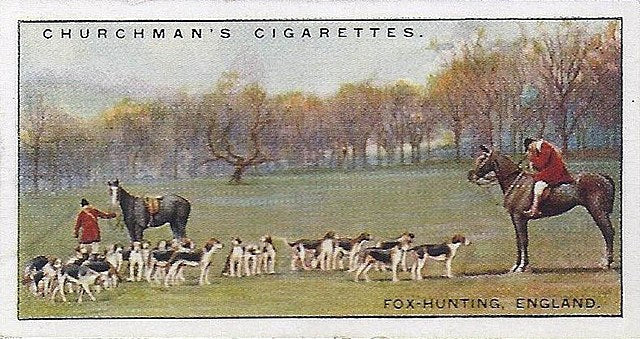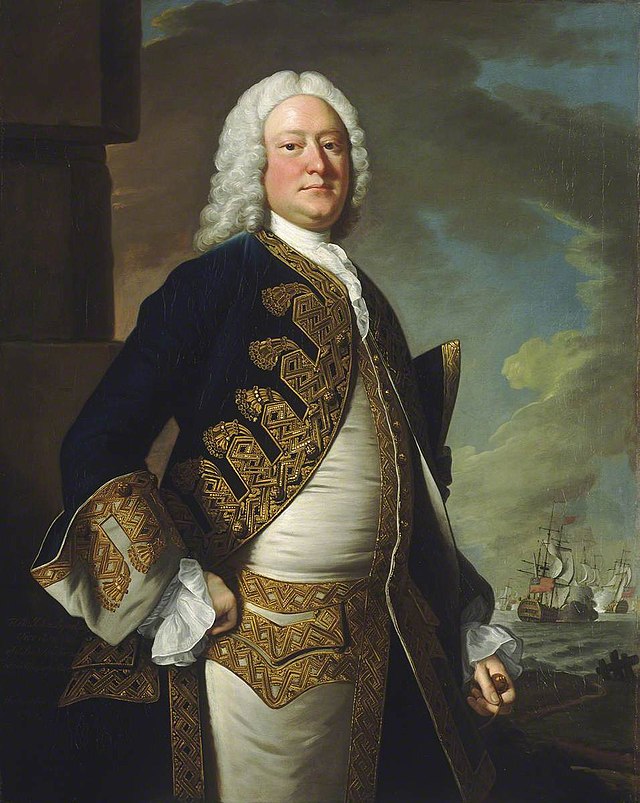A Brief Overview of Men's Regency Fashion
 An Overview of Men's Regency Fashion
An Overview of Men's Regency Fashion
The Regency period, for both women's and men's Regency fashion, saw the final abandonment of lace, embroidery, and other embellishment from serious men's clothing — it would not reappear except as an affectation of Aesthetic dress in the 1880s and its successor, the Young Edwardian look of the 1960s. Instead, cut and tailoring became much more important as an indicator of quality.
Breeches became longer — tightly-fitted leather riding breeches reached almost to the boot tops — and were replaced by pantaloons or trousers for fashionable street wear.
Coats were cutaway in front with long skirts or tails behind, and had tall standing collars. The lapels featured an M-shaped notch unique to the period.
Shirts were made of linen, had attached collars, and were worn with stocks or wrapped in a cravat tied in various fashions. Pleated frills at the cuffs and front opening went out of fashion by the end of the period.
Waistcoats were relatively high-waisted, and squared off at the bottom, but came in a broad variety of styles. They were often double-breasted, with wide lapels and stand collars.
Overcoats or greatcoats were fashionable, often with contrasting collars of fur or velvet. The garrick, sometimes called a coachman's coat, was a particularly popular style, and had between one and three short capelets atached to the collar.
Boots, typically Hessian boots, already a mainstay in men's footwear, became the rage after the Duke of Wellington defeated Napoleon at Waterloo in 1815. Wellington boots, as they were known, sported low cut heels and tops that were calf-high.
The Rise of the Dandy
The clothes-obsessed dandy first appeared in the 1790s, both in London and Paris. In the slang of the time, a dandy was differentiated from a fop in that the dandy's dress was more refined and sober. In High Society: A Social History of the Regency Period, 1788-1830, Venetia Murray writes:Other admirers of dandyism have taken the view that it is a sociological phenomenon, the result of a society in a state of transition or revolt. Barbey d'Aurevilly, one of the leading French dandies at the end of the nineteenth century, explained: Some have imagined that dandyism is primarily a specialisation in the art of dressing oneself with daring and elegance. It is that, but much else as well. It is a state of mind made up of many shades, a state of mind produced in old and civilised societies where gaiety has become infrequent or where conventions rule at the price of their subject's boredom...it is the direct result of the endless warfare between respectability and boredom.In Regency London dandyism was a revolt against a different kind of tradition, an expression of distaste for the extravagance and ostentation of the previous generation, and of sympathy with the new mood of democracy. It was an entirely new style of men's Regency fashion. Beau Brummell set the fashion for dandyism in British society from the mid-1790s, which was characterized by immaculate personal cleanliness, immaculate linen shirts with high collars, perfectly tied cravats, and exquisitely tailored plain dark coats (contrasting in many respects with the "maccaroni" of the earlier eighteenth century).
 Brummell abandoned his wig and cut his hair short in a Roman fashion dubbed à la Brutus, echoing the fashion for all things classical seen in women's wear of this period. He also led the move from breeches to snugly-tailored pantaloons or trousers, often light-colored for day and dark for evening, based on working-class clothing adopted by all classes in France in the wake of the Revolution. In fact, Brummel's reputation for taste and refinement was such that, fifty years after his death, Max Beerbohm, wrote:
Brummell abandoned his wig and cut his hair short in a Roman fashion dubbed à la Brutus, echoing the fashion for all things classical seen in women's wear of this period. He also led the move from breeches to snugly-tailored pantaloons or trousers, often light-colored for day and dark for evening, based on working-class clothing adopted by all classes in France in the wake of the Revolution. In fact, Brummel's reputation for taste and refinement was such that, fifty years after his death, Max Beerbohm, wrote:
In certain congruities of dark cloth, in the rigid perfection of his linen, in the symmetry of his glove with his hand, lay the secret of Mr Brummell's miracles.Not every male aspiring to attain Brummel's sense of elegance and style succeeded, however, and these dandies were subject to caricature and ridicule. Venetia Murray quotes an excerpt from Diary of an Exquisite, from The Hermit in London, 1819:
Took four hours to dress; and then it rained; ordered the tilbury and my umbrella, and drove to the fives' court; next to my tailors; put him off after two years tick; no bad fellow that Weston...broke three stay-laces and a buckle, tore the quarter of a pair of shoes, made so thin by O'Shaughnessy, in St. James's Street, that they were light as brown paper; what a pity they were lined with pink satin, and were quite the go; put on a pair of Hoby's; over-did it in perfuming my handkerchief, and had to recommence de novo; could not please myself in tying my cravat; lost three quarters of an hour by that, tore two pairs of kid gloves in putting them hastily on; was obliged to go gently to work with the third; lost another quarter of an hour by this; drove off furiously in my chariot but had to return for my splendid snuff-box (Decorative boxes), as I knew that I should eclipse the circle by it.
Hairstyles and Headgear
Older men, military officers, and those in conservative professions such as lawyers and physicians retained their wigs and powder into this period, but younger men of fashion wore their hair in short curls, often with long sideburns. Tricorne and bicorne hats were still worn, but the most fashionable hat was tall and slightly conical - this would evolve into the top hat and reign as the only hat for formal occasions for the next century.*****
Enjoyed this article on men's Regency fashion? Why not browse our costume section at our online giftshop for costume, patterns and accessories?


6 comments
I really enjoyed this overview of men’s Regency fashion! It’s fascinating to see how the styles from that era—like the tailored coats, high collars, and elegant accessories—still influence modern menswear today. Thanks for breaking down the key elements so clearly. Looking forward to more posts like this!
Shahzaman
This is a great post on mens regency fashion. In regency the traditions were on the first priority. Since trends change every year, such traditions are moulded in a modern way.
Anonymous
In regency the traditions were on the first priority as the trends changes every years such traditions are moulded in modern way.
Anonymous
Somehow, men’s dress hasn’t become any simpler for us, which is a pity. If we must spend such time dressing,it ought to be made worthwhile by wearing the sartorial splendour of a previous era.
Anonymous
Do you know if the brim of a man’s beaver or top hat, could help to break a fall and prevent serious injury? Imagine a gentlemen falling backwards on to a London road in his formal evening attire. Would the brim be immediately crushed or might it lighten the impact with which the had would hit the road?
Anonymous
Way of dressing in olden days are different and neat way. But trends changing every year.
Anonymous
Leave a comment
This site is protected by hCaptcha and the hCaptcha Privacy Policy and Terms of Service apply.